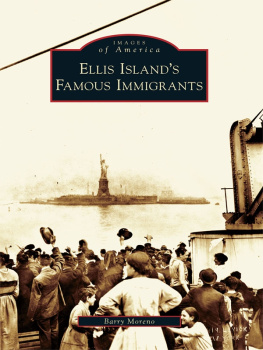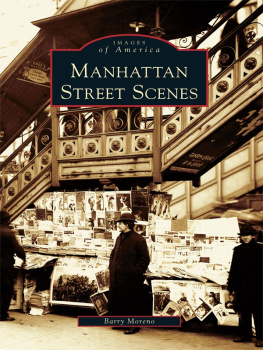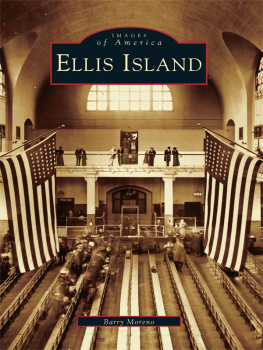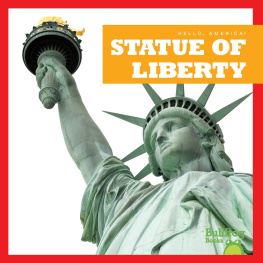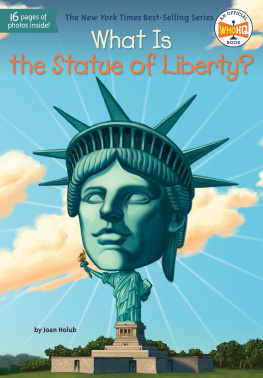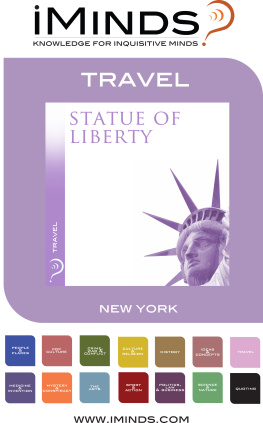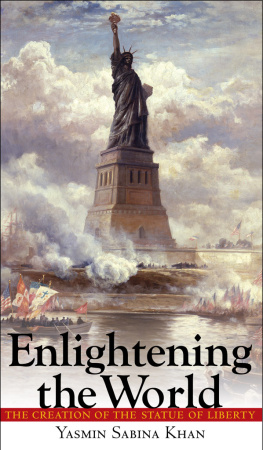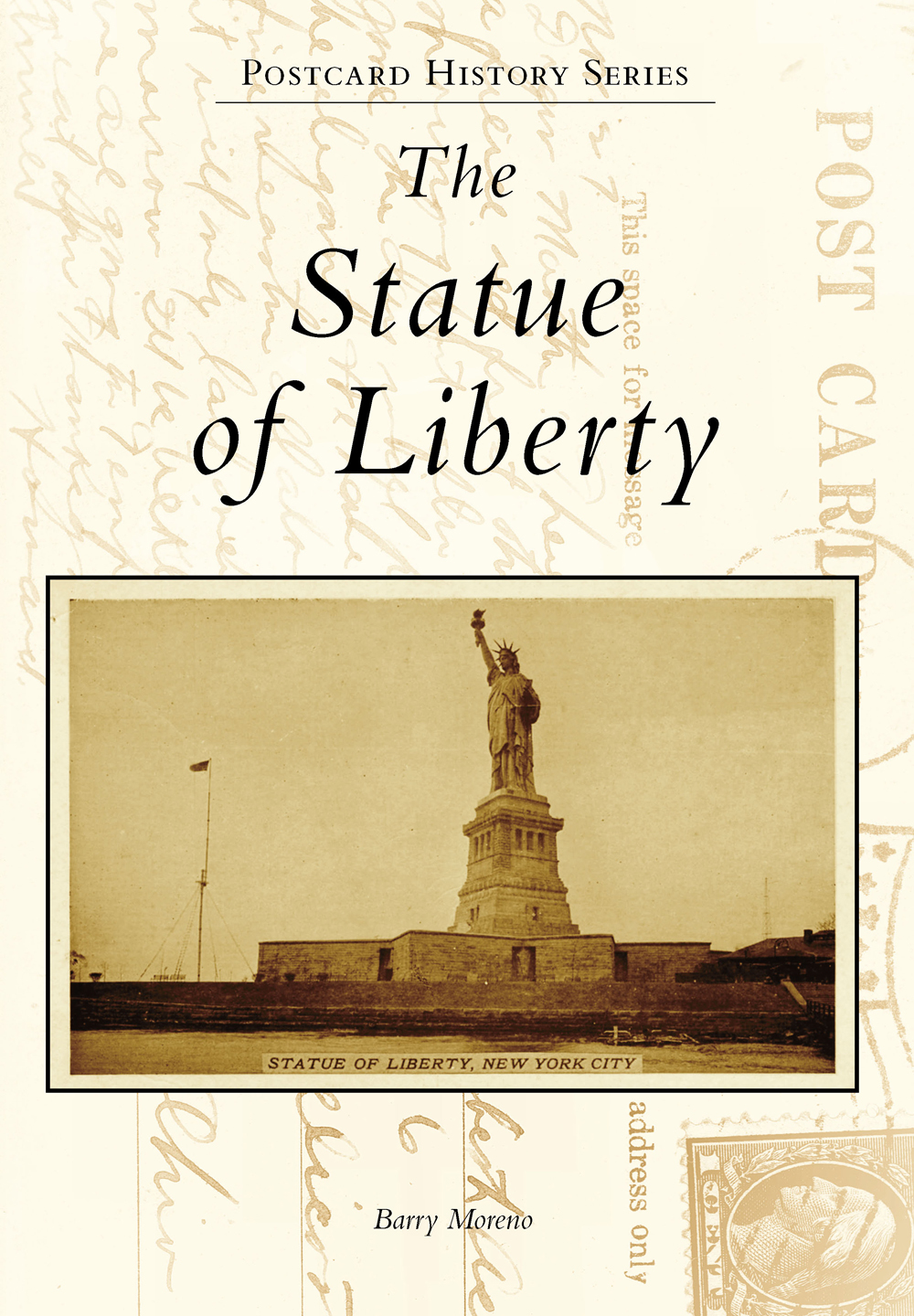
POSTCARD HISTORY SERIES
The
Statue
of Liberty
ON THE FRONT COVER: PHOTOGRAPH POSTCARD. This classic postcard of the Statue of Liberty shows the pedestal within the granite-faced walls of Fort Wood on Bedloes Island in New York Harbor. The photograph for this postcard was probably taken before 1920. (Authors collection.)
ON THE BACK COVER: BEDLOES ISLAND FROM THE AIR. This aerial shot of the Statue of Liberty National Monument dates to around 1937. It shows the remaining structures of the War Departments Army base known as Fort Wood, which was being decommissioned by the secretary of war while the island was transferred to the jurisdiction of the National Park Service, US Department of the Interior. (Authors collection.)
POSTCARD HISTORY SERIES
The
Statue
of Liberty
Barry Moreno

Copyright 2017 by Barry Moreno
ISBN 978-1-4671-2455-3
Ebook ISBN 9781439659595
Published by Arcadia Publishing
Charleston, South Carolina
Library of Congress Control Number: 2016957585
For all general information contact Arcadia Publishing at:
Telephone 843-853-2070
Fax 843-853-0044
E-mail
For customer service and orders:
Toll-Free 1-888-313-2665
Visit us on the Internet at www.arcadiapublishing.com
This book is dedicated to Charlie DeLeo, now retired, but for many years Libertys Keeper of the Flame.
CONTENTS
ACKNOWLEDGMENTS
For some years now I have been collecting postcards, from those that feature the goddess of Liberty and the old US immigration station on Ellis Island to those that showcase the once glorious homes of those bright lights of stage and screen of Hollywoods Great Golden Age (19191960s). Many of my Liberty view cards are featured in this book. Although I collected them before I decided to proceed with such a book as this, I had never really studied the history of postcards nor the commercial industry that arose from them. The postcard itself is such a little thing that we often never really appreciate the impact it has had on social history. We merely take the pretty little things for granted. But with this book in mind, I soon found I had to learn something about them. Fortunately, I found that many fine history books have been written about the humble postcard and its beginnings. Among them, I bought Picture Postcards of the Golden Age by Maj. Tonie and Mrs. Valmai Holt, a work mainly about the postcard trade in Great Britain and, to a lesser extent, Ireland; Picture Postcards of the United States, 18931918 by Prof. George E. Miller and his wife, Dorothy Ryan Miller; and Postcard America: Carl Teich and the Imaging of a Nation by Jeffrey L. Meikle, a cultural historian at the University of Texas. These and the other works I have consulted appear in the bibliography. Helpful for information on Curt Teich was Robert Pitchford, son of the late Garnet Pitchford, one of Teichs commercial representatives. A number of the images in this book appear courtesy of the National Park Service, Library of Congress, and the National Archives and Records Administration. Unless otherwise noted, all the rest of the images are from my own private collection.
At Arcadia Publishing, I must thank Katie W. Kellett, director of imprints; Elizabeth Lanier, acquisitions editor; Jeff Ruetsche, title management coordinator; and Michael Kinsella, publishing manager. They have been supportive to me in the different stages of moving this work toward publication.
INTRODUCTION
On May 19, 1898, Congress adopted the Private Mailing Card Act. The new law, approved by Pres. William McKinley, took effect on July 1 of that year. It allowed individuals to make and sell postcards so long as they adhered to certain requirements, such as size and quality of paper used. Prior to this, only the US Post Office could print and sell postcards. Thus, the modern American postcard industry was born in the Gilded Age, when grand monuments were built and tourism was already well-established in Europe and North America. Thousands of people had visited Auguste Bartholdis colossal Statue of Liberty that stood on Bedloes Island in New York Harbor prior to 1898. The island, reached by ferry at a cost of 25 per passenger, already had a refreshment and souvenir stand; after the act was passed, the humble postcard took its place among the statuettes, banners, and buttons sold there, and soon would outsell them all.
The postcard was invented in Europe. Austria was the very first nation to design and print them. The year was 1869. Soon, other European nations followed Viennas leadSwitzerland and Great Britain in 1870; Belgium and the Netherlands in 1871; Russia and France in 1872; Romania, Japan, Spain, and the United States (US Post Officeissued postcards only) in 1873; and Germany and Italy in 1874. In terms of quality printing, the Germans held the prize. At the Paris Universal Exposition of 1889, an image of the Eiffel Tower was included in commemorative postcards issued for that event. This led to the inclusion of small imagery on some postcards. In 1894, the first picture postcard was issued in Great Britain and Ireland. In 1898, the United States ended the government monopoly of printing and selling postcards. Soon, American postcard printing firms came into existencethe lucrative industry had finally come to the United States. Since the German lithographers in cities like Leipzig produced the best-quality postcards in the world, many of them were drawn to the virgin soil of the United States. It was not long before the best American postcards were being printed in Germany and shipped to the United States. In 1902, the earliest divided back postcard began being printed in Great Britain. This card allowed a person to address the card to someone on one side of the divided line and write a message to them on the other side. France followed with one of its own in 1904, as did Germany in 1905 and the United States in 1907.
Annoyed at the foreign dominance in the US market, American postcard printers pressured Congress into imposing a tariff on all imported postcards. This was aimed at the German printers and was quite effective. Signed into law by Pres. William Howard Taft, the Payne-Aldrich Tariff of 1909 imposed a duty on all imported postcards, especially those with pictures of typical American scenes, such as the Statue of Liberty. By 1912, these German-made American postcards had lost their dominance in the trade. In 1915, the white border card era began. The reason was to save the printers money on their ink bills. In 1931, Curt Teichs linen postcards came on the market, causing a sensation. This American innovation enlivened images on postcards by giving them the semblance of reflecting light. Another design style, the photochrome postcard, was introduced in 1939. By 1945, its rich chrome colors would become the favorite in the postcard trade. Real-photo postcards were introduced soon after the invention and marketing of Kodaks 3A folding pocket camera in 1903. This type of card has gone in and out of fashion many times.
This book begins with a chapter on Libertys own story. It tells of how the idea for her first started in the inventive minds of two Frenchmen, Laboulaye and Bartholdi, and how they then joined together to make her a reality. The contributions from donors, architects, engineers, builders, politicians, and others are included in the pages that tell Miss Libertys story. It next traces Libertys imagery in the postcard trade decade after decade. A major change came to Liberty and the tourist business when she was made a national monument in 1924. However, a bigger change came nine years later.
Next page


